Canon RF 50mm f/1.8 STM lens

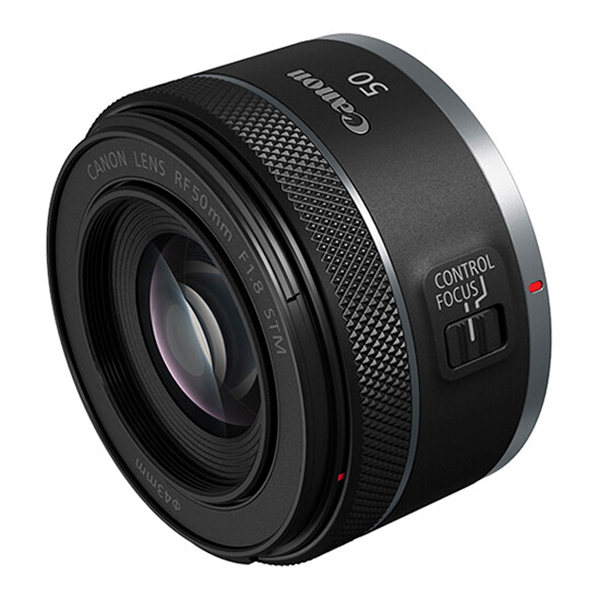
In summary
Compact, lightweight and close-focusing, the RF 50mm f/1.8 STM is a remarkable little lens that is priced within the range of everyday photographers.
Currently the cheapest native lens in the RF system it will be an attractive choice for EOS R-series camera owners looking for an affordable high-performing standard prime lens.
Full review
Announced on 4 November 2020, the RF 50mm f/1.8 STM lens is roughly one tenth of the price and roughly one sixth of the weight of the RF 50mm f/1.2L USM lens, which we reviewed in November 2018, but only one stop slower. Like that lens, it covers the ‘natural’ field of view of human vision and features the customisable lens control ring that characterises this lens series. Small and light enough to pair with the entry-level EOS RP camera, it’s not out of place on the EOS R6 body we used for our tests.

Angled view of the RF 50mm f/1.8 STM lens. (Source: Canon.)
The optical design of this lens is less complex than its more up-market sibling, with only six elements in five groups. One precision-molded (PMo) aspherical element is included to suppress spherical aberrations and distortion, while Super Spectra coating minimises ghosting and flare. A rounded seven-blade diaphragm produces a pleasing bokeh quality.
Unlike the f/1.2 lens, the RF 50mm f/1.8 is not weather-resistant and, typically for a ‘nifty fifty’lens, neither of them is stabilised. Autofocusing is driven by a stepping motor (STM), which is fast and operates smoothly but is not guaranteed to be silent like the ring-type ultrasonic motor in the f/1.2 lens.
The customisable control ring can be used to adjust exposure settings such as aperture, ISO, and exposure compensation. Full-time manual focus override is available by simply moving the slider on the barrel of the lens to the focus position and selecting MF in the camera’s AF menu page. Focusing aids and a distance scale are displayed on the camera’s screens in MF mode.
Who’s it For?
The RF 50mm f/1.8 STM lens will be welcomed by many owners of Canon’s EOS R cameras, not least because it provides an affordable alternative to the RF 50mm f/1.2L USM lens. Its small size and light weight (160 grams) make it an ideal walkaround lens, especially for street and everyday snapshots as well as events landscapes, fashion, product and travel photography.
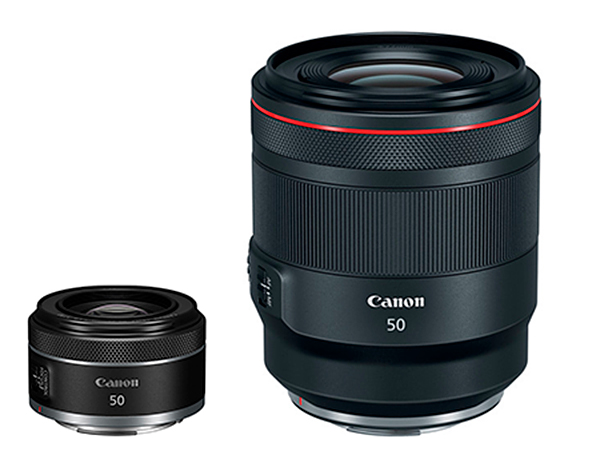
This illustration shows how much smaller the RF 50mm f/1.8 STM lens is than its faster f/1.2 sibling. (Source: Canon.)
The f/1.8 lens will also focus closer than the f/1.2 lens, with a minimum focus of 30 cm compared with 40 cm for the larger lens. At 30 cm it provides one quarter life size magnification. The table below compares key features of the two lenses.
| RF 50mm f/1.8 STM | RF 50mm f/1.2L USM | |
| Announced | November 2020 | September 2018 |
| Minimum aperture | f/22 | f/16 |
| Lens construction | 6 elements in 5 groups (including 1 aspherical element) | 15 elements in 9 groups (including 3 aspherical and 1 UD elements |
| Coatings | Super Spectra Coating | Air Sphere and fluorine |
| Diaphragm blades | 7 (circular aperture) | 10 (circular aperture) |
| Focus drive | Stepping motor (STM) | Nano USM (ring-type) |
| Minimum focus | 30 cm | 40 cm |
| Maximum magnification | 0.25x | 0.19x |
| Filter diameter | 43 mm | 77 mm |
| Lens diameter | 69.2 mm | 89.8 mm |
| Lens length | 40.5 mm | 108 mm |
| Weight | 160 grams | 950 grams |
| Weather sealing | No | Yes |
| Supplied accessories | Lens front and end caps | Lens front and end caps, ES-83N lens hood, LP1319 lens pouch |
| RRP on initial release | AU$389 | AU$3599 |
Interestingly, the RF lens is almost twice the price of the EF 50mm f/1.8 STM lens, which is very close to the same size and weight. Both lenses have metal mounting plates but are otherwise made from polycarbonate plastic and neither comes with a lens hood. However, you’d need to add the length and weight of an adapter if you wanted to use the EF lens on an RF-mount camera body.
Build and Ergonomics
Canon doesn’t list the materials used in the construction of this lens but our guess is that it is made mostly of polycarbonate plastic with a solid metal mount that connects to the camera. Build quality is good for a mostly plastic lens, although this lens is not weather-sealed.
There’s only one ring, the programmable control ring found on all RF lenses which, in this lens can be manual focus adjustment but can also be programmed to adjust aperture, ISO or exposure compensation. Located roughly 5 mm behind the front of the lens it is 9 mm wide and textured to make it easily identifiable by touch. A slider in the 25 mm wide section of the lens barrel behind the control ring is used to switch between focus and control modes.
A 3 mm wide strip of gunmetal grey separates the body of the lens from the metal lens mount, which has the usual 12 contact points around its inner edge for passing electronic signals between the lens and the camera. The diameter of the front element is 28 mm and the lens accepts 43 mm diameter filters.
Performance
We were very impressed by the results of our Imatest tests on the review lens, which showed it to be a particularly good performer. Resolution comfortably exceeded expectations for the 20-megapixel sensor in the EOS R6 camera we used for our tests both near the centre of the frame and towards the edge.
The highest resolution was obtained between f/2.5 and f/11 and performance was remarkably even across the aperture range of the lens until diffraction began to take effect. The results of our tests on JPEG files are shown in the graph below. (Similar results, albeit at slightly higher resolution, would be obtained for raw files.)
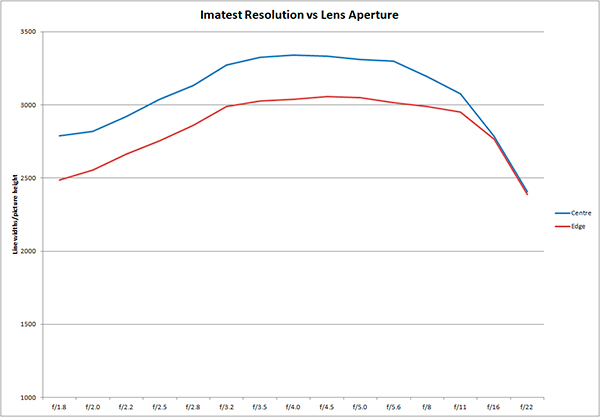
Because the EOS R6 automatically corrects chromatic aberration in JPEGs, we have used the data from CR3.RAW files to produce the graph of the results of our tests below. It shows lateral chromatic aberration well down in the ‘negligible’ band the upper edge of which is defined by the red line. We found little or no coloured fringing in our raw file test shots and in-camera corrections completely removed it from JPEGs.
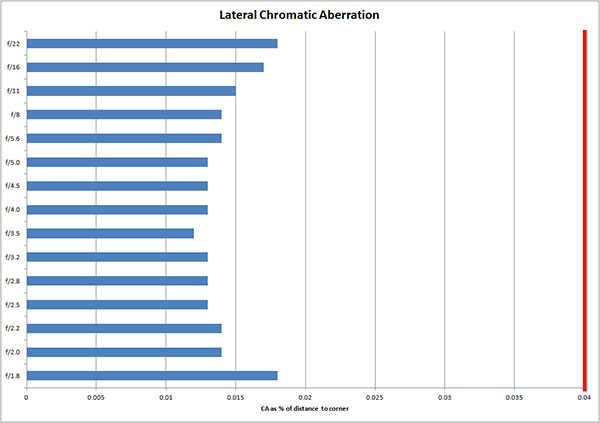
Autofocusing was very quiet, although not totally silent so external microphones are advisable if you want to capture ambient sounds while shooting movies. With both stills and movies we found focusing to be fast and generally accurate, provided the correct AF point or area was selected.
There was some evidence of focus ‘breathing’ at close focusing distances in the form of slight frame cropping. While not significant for stills shooters, it can become visible in video recordings when focus is ‘pulled’ between close and distant subjects.
Aberrations like vignetting and distortion are corrected automatically in JPEGs so we had to assess raw files to determine whether they were significant. We found distortion to be effectively negligible but vignetting could be seen in raw files taken at f/1.8. It had largely disappeared by f/4.
Bokeh was mostly smooth and attractive at wide apertures but we found traces of highlight outlining in shots of backlit subjects. Evenly-lit backgrounds were smooth and the shallow focus ensured a nice blending of tones.
Despite the lack of stabilisation in the lens, we were able to take advantage of the IS system in the EOS R6 body and use shutter speeds as low as 1/2 second for hand-held shooting in low light levels. Most of the shots taken with shutter speeds between 1/6 and ½ second were totally blur-free.
Conclusion
Please Login or Register to access the Conclusion.
SPECS
Picture angle: 46 degrees
Minimum aperture: f/22
Lens construction: 6 elements in 5 groups (including 1 aspherical, element plus Super Spectra Coating)
Lens mount: Canon RF
Diaphragm Blades: 7 (circular aperture)
Weather resistance: No
Focus drive: Stepping motor (STM)
Stabilisation: No
Minimum focus: 30 cm
Maximum magnification: 0.25x
Filter size: 43 mm
Dimensions (Diameter x L): 69.2 x 40.5 mm
Weight: 160 grams
Standard Accessories: Lens front and end caps
Distributor: Canon Australia; 1800 021 167
TESTS
Based on JPEG files taken with the EOS R6 camera.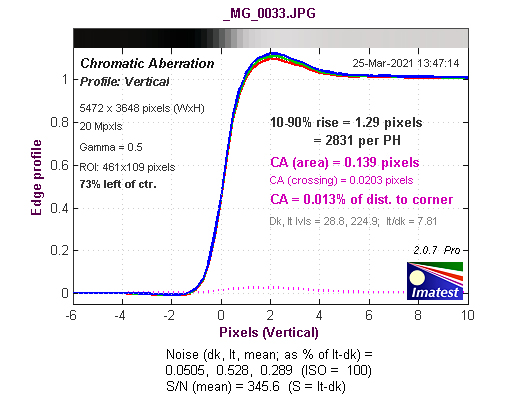
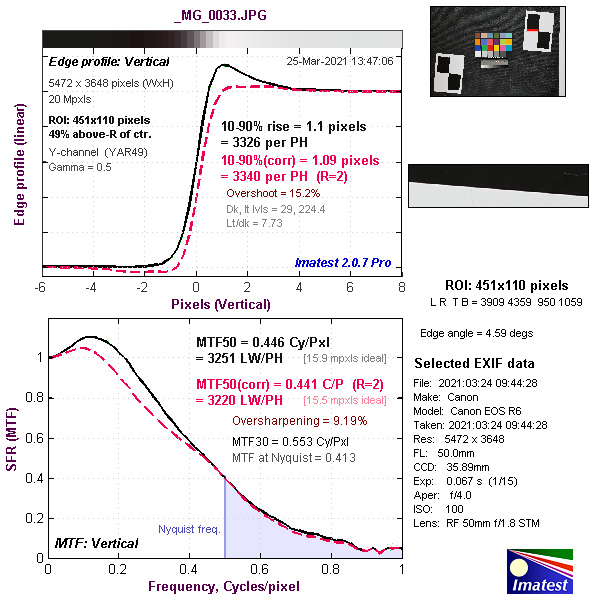
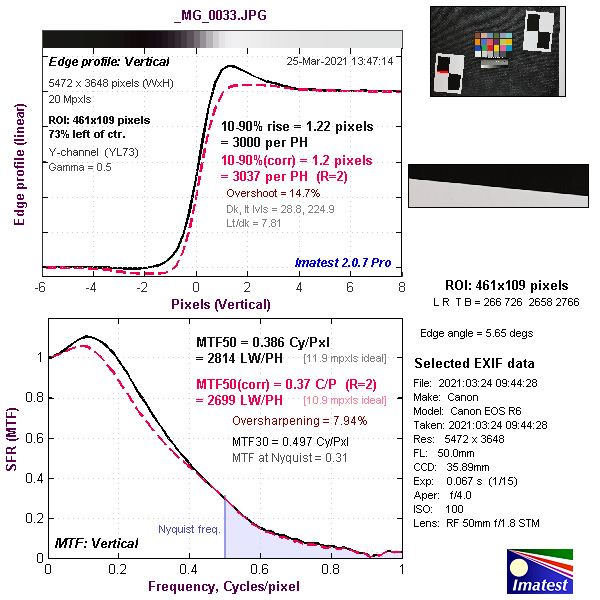
Based on CR3.RAW files recorded simultaneously and converted into 16-bit TIFF format with Adobe Camera Raw.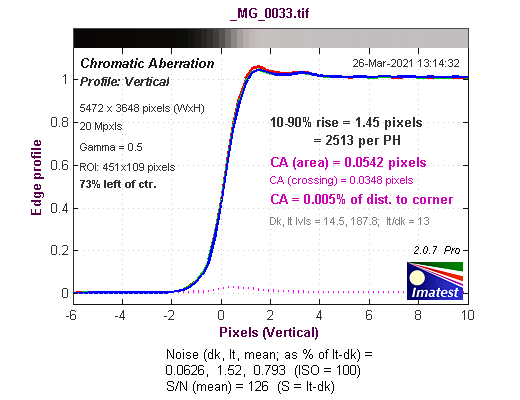
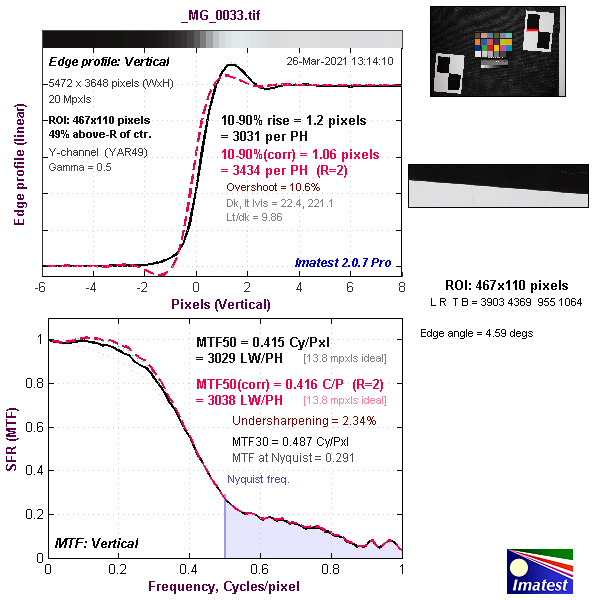
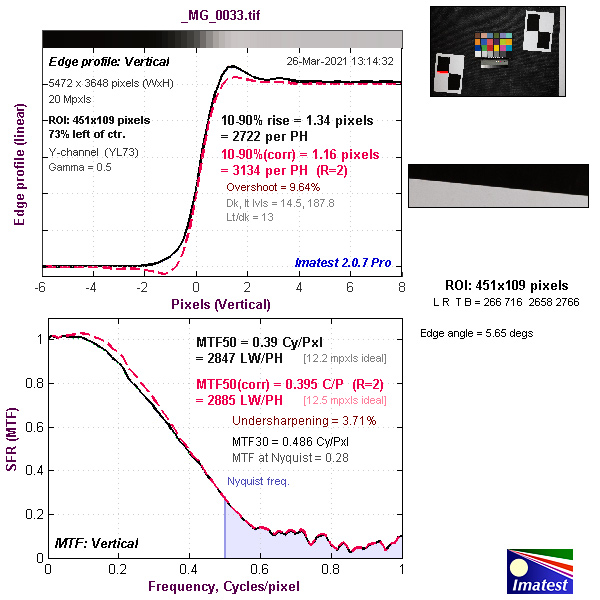
SAMPLES

Vignetting at f/1.8.
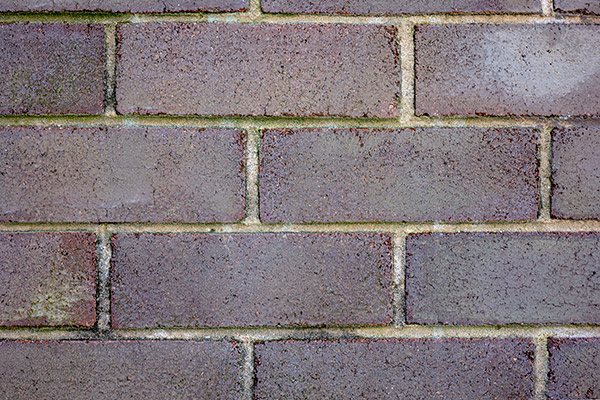
Rectilinear distortion.
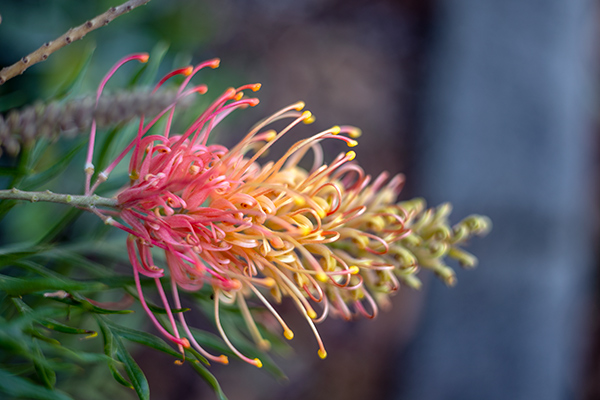
Close-up at f1.8 with an evenly-lit background; 1/640 second, ISO 100.
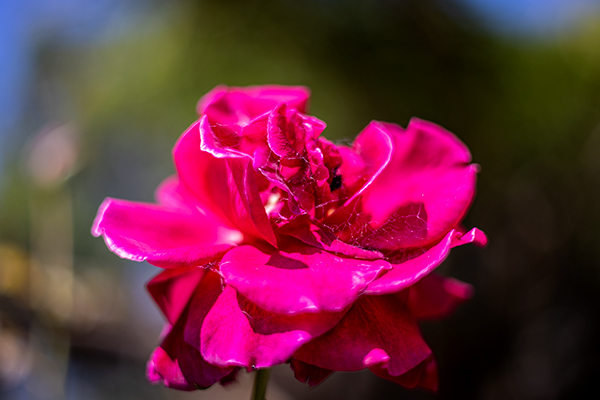
Close-up at f1.8 with an unevenly-lit background; 1/800 second, ISO 100.
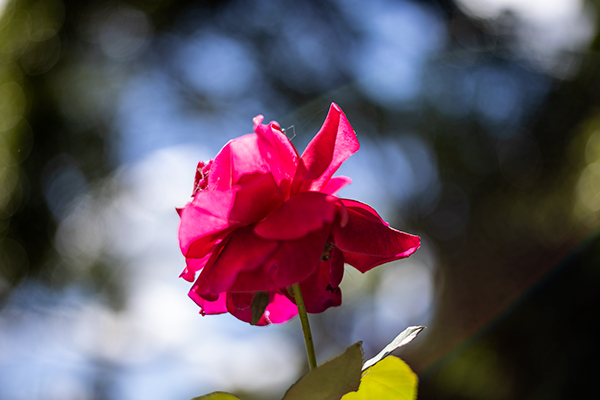
Bokeh in a backlit shot at f/1.8 with an uneven background; ISO 100, 1/2000 second. ‘Onion-skin’ outlining in highlights can be seen.
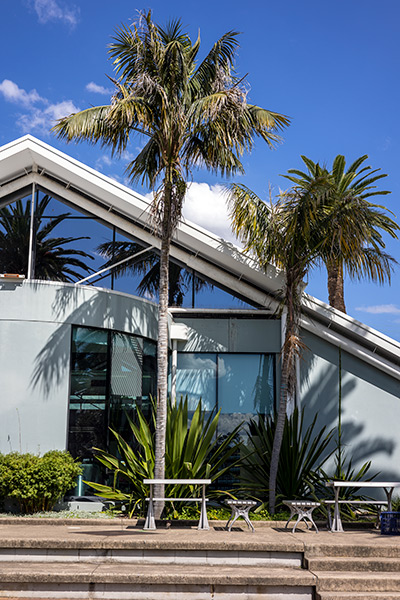
ISO 100, 1/200 second at f/9.

Crop from the above image showing no coloured fringing.
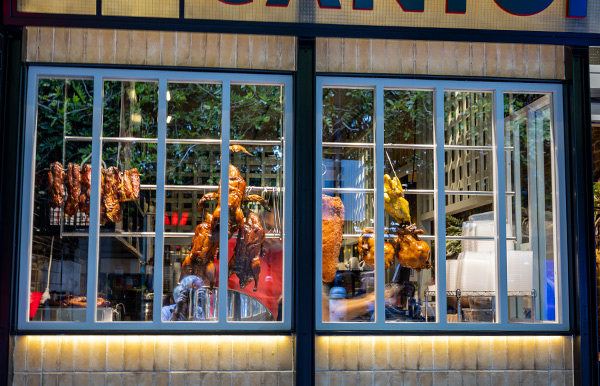
Hand-held shot taken at 1/2 second; ISO 100, f/8.
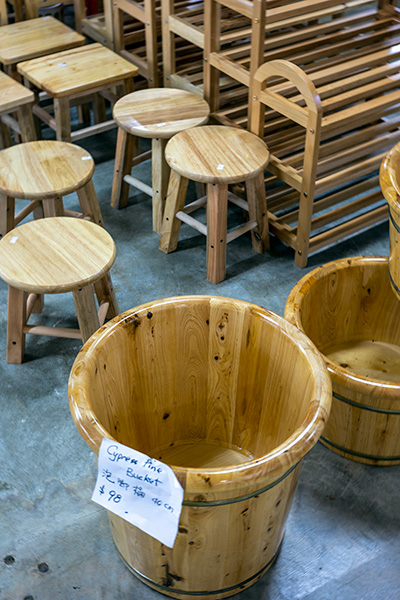
Hand-held shot taken at 1/3 second; ISO 100, f/5.6.

Hand-held shot taken at 1/8 second; ISO 100, f/8.
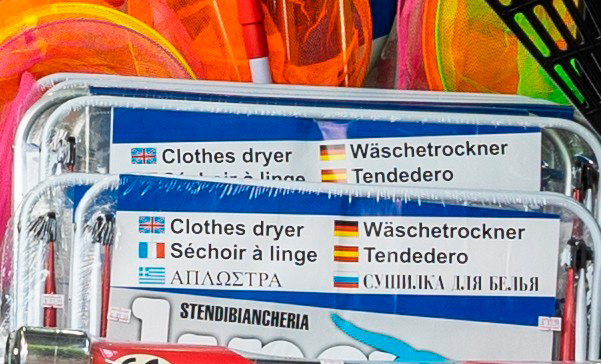
Crop from the above image magnified to 100%.

Hand-held shot taken at 1/6 second; ISO 100, f/9.

Hand-held shot taken at 1/8 second; ISO 100, f/7.1.

ISO 100, 1/13 second at f/11.
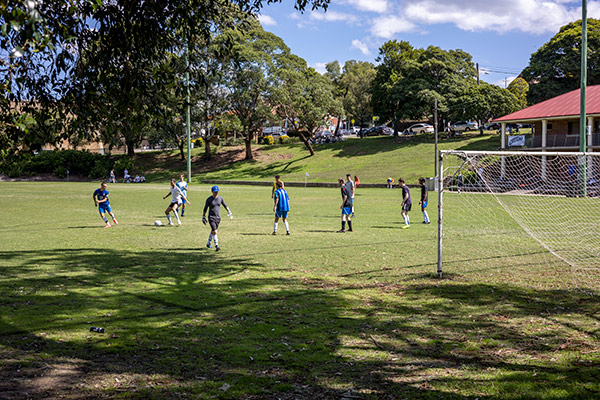
ISO 100, 1/160 second at f/8.

ISO 100, 1/200 second at f/8.
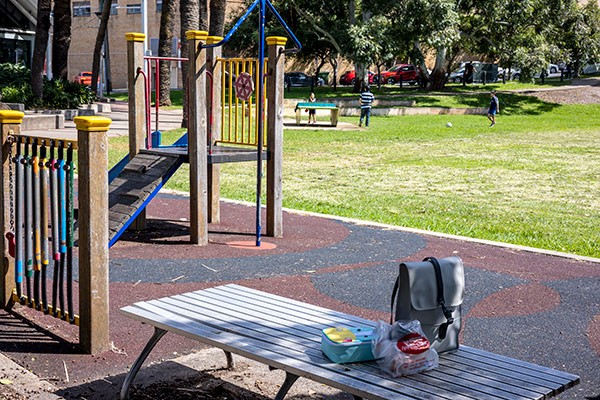
ISO 100, 1/160 second at f/8.

ISO 100, 1/200 second at f/7.1.

ISO 100, 1/25 second at f/7.1.

ISO 100, 1/40 second at f/7.1.

ISO 100, 1/100 second at f/5.

ISO 100, 1/500 second at f/4.5.
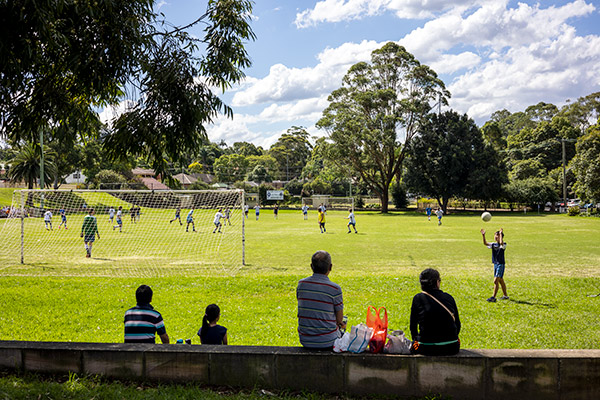
ISO 100, 1/160 second at f/10.
Rating
RRP: AU$389; US$199
- Build: 8.8
- Handling: 8.8
- Image quality: 9.2
- Autofocusing: 9.0
- Versatility: 8.9
BUY





